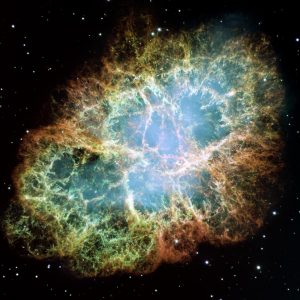What StarPixels Is (and Isn’t)
I’m Rick—astronomer, educator, technologist, and stubborn optimist about the night sky. StarPixels is my laboratory for turning raw curiosity into practical, beautiful astronomy: images, lessons, gear wisdom, and the occasional cosmic side-eye at bad science. I shoot from North Texas (Denton/Argyle), where light pollution is real and excuses don’t help. The goal isn’t perfection; it’s repeatable awe you can try yourself.
Expect here:
- Clear, no-nonsense guides to seeing and photographing the sky.
- Images captured with accessible gear (smart scopes, DSLRs, modest mounts).
- Short videos that teach something you’ll remember tomorrow.
- A running conversation about where astronomy is headed (smart scopes, EAA, AI tools) without hype.
Origin Story: Why This Exists
I spent decades building tech and strategy in the corporate world. Now I build nights: planning, capturing, and translating space into something you can feel and learn from. StarPixels started because friends kept asking the same question in different ways—“Can I really do this?” Yes. With the right plan and a bit of stubbornness, you’ll be surprised how far you can go under suburban skies.
How the Sausage Gets Made (Gear & Workflow)
- Scopes & Optics: Vaonis Vespera 2 (dual-band + CPL filters), an older Tascam Star Finder 70 mm with tracker, plus a growing DIY scope project.
- Cameras: Canon Rebel T2i (EOS 550D), Nikon D70 (legacy but loved), iPhone for quick sky captures.
- Lenses: Samyang 135 mm f/2.0 ED UMC for wide-field nebulae that punch above their weight.
- Mounts & Helpers: iOptron SkyGuider Pro; polar tools from basic to iPolar.
- Processing: Stacking and post in Affinity Photo 2 (iPad + Mac), selective use of Photoshop (iPad), with clean color science and restrained denoising.
- Smart Tools: Vespera’s Singularity app for planning/capture; Stellarium/TheSkyLive for coordinates and sessions.
- Local AI/Creative Rig: Ryzen 7 + RTX 5070 Ti for image/video workflows, ComfyUI for animation assistance (no “AI-ish” artifacts allowed in final astro images).
Principle: minimal gear, maximal plan. You don’t need a cathedral of equipment—just a repeatable process.
The StarPixels Method (Field-tested)
- Choose targets that fit tonight. Season, altitude, moon, transparency, and your light dome matter more than the perfect camera.
- Capture steadily. Long total integration beats heroic single subs. I stack mercilessly.
- Process honestly. Stretch, color-calibrate, tame gradients; don’t invent signal that isn’t there.
- Teach the why behind the pretty. Every image gets context: what you’re seeing, how far, why it matters.
- Share settings and coordinates. If you can’t reproduce it, it’s a poster, not a practice.
What You’ll Find Here
- Skynotes (North Texas–tuned): Tonight/next-night observing windows, moon/twilight, transients with RA/Dec, alt-az at start time, and visibility notes.
- Image Posts: Acquisition details, processing notes, and “try-this-yourself” guidance.
- Deep Dives: Messier to JWST lenses—history, physics, and practical observing.
- Creator Logs: Gear upgrades that actually help (and the ones that looked clever but didn’t).
- Verified Visuals: Direct links to primary sources (ESA/Webb, WebbTelescope, ESA/Hubble, NASA Images, Stellarium/TheSkyLive, and when relevant SkyView/Aladin Lite/SIMBAD). No dead-end generic homepages; links point to the exact asset or ephemeris used.
Philosophy: Practical Awe
Awe is not a mood—it’s a method. Start with something you can do tonight. Learn one new thing. Repeat. The universe rewards consistency.
- Accessible: I prefer repeatable approaches over boutique setups.
- Evidence-first: Claims get sources; images get capture details.
- Respect for time: You’ll leave with a plan, not just admiration.
Favorite Projects in Rotation
- Messier Series, Re-imagined: 110 objects, but framed for modern observers (smart scopes, small refractors, binoculars), with high-yield tips per light-polluted sky.
- Cosmic Tourism & Dark Sky Movement: How to chase awe without wrecking it.
- Smart-Scope Reality Checks: What automation nails—and where your eye still wins.
- Gravitational Lensing, Explained: Mind-bending, minus the hand-waving.
For Beginners (Start Here)
- First Targets That Always Work: The Pleiades (M45), Andromeda (M31), Orion Nebula (M42), Lagoon (M8) in season.
- First Tools That Matter: A plan (Stellarium), a steady mount, and honest expectations.
- First Win: Track 30–90 minutes on a bright nebula; stack; do a gentle stretch. Post it. Learn. Go again.
For the Nerds (Welcome Home)
- Acquisition logs with RA/Dec, integration time, filter notes.
- Reproducible processing steps; color-calibration rationale.
- North-Texas-specific transparency/seeing commentary and workarounds.
- Gentle EAA (electronically assisted astronomy) experiments—documented wins and misses.
Community & Collabs
Want to test a workflow, co-author a guide, or run a shared dataset challenge? I prefer real experiments over press releases. Reach out below with something we can actually try.
Disclosures & Credits
- Verified Visuals: All “reference” links direct to specific public, no-login resources.
- SpaceEngine Credit: Some educational visuals use SpaceEngine. Visuals created with SpaceEngine (PRO license held for monetized content); credit provided.
- No Paid Hype: If I ever accept sponsorship or affiliate support, I’ll label it clearly—and still tell you if a product misses.
Connect
- YouTube & TikTok: Short, mid-length, and deep-dive videos in a single, mobile-native format.
- Facebook: Nightly/next-night Skynotes and transient alerts for North Texas.
- Contact: rick [at] starpixels.studio (or use the form below).
Call to Action:
- Subscribe to Skynotes (tonight’s best target, ready in five minutes).
- Grab the Beginner’s Checklist (PDF): from “What time?” to “Why is my nebula green?”
Share this content:

